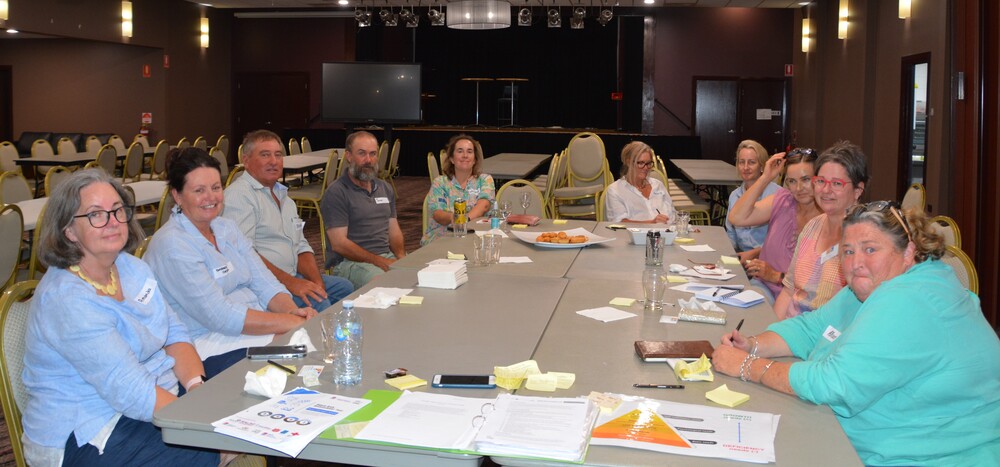14 chances to make a plan for drought
Laura Williams
26 February 2024, 6:40 AM
 A drought planning workshop held in Warren last week. (Warren Shire Council)
A drought planning workshop held in Warren last week. (Warren Shire Council)When Western Plains locals were asked to speak about the challenges in the region - particularly drought - the people spoke.
In 14 workshops across the region, over 150 people have come to have their say on how locals are impacted in times of drought, as part of consultation for a resilience plan in the works.
The Regional Drought Resilience Planning program is being conducted by the Far North-west Joint Organisation (FNWJO), and as part of the Future Drought Fund, is asking for local insight to create a plan that considers drought-related issues beyond water security.
“The biggest thing that has been highlighted is that businesses both on and off farm have such challenges to accessing services, energy and technology, that when they have a disadvantage in the good years, it compounds during those drought years,” Regional Drought Resilience Plan Officer Belinda Colless said.
“It means they’re never working at their optimal in the good years…so they’re not able to make themselves more resilient in the not so good years.”
For farmers, that might look like lost productivity in finding phone service to order a new part, before driving in and out of the nearest stockist to get it.
In town-based businesses, it might be employers needing to overly-incentivise roles to find skilled workers, only to lose the business to maintain staff levels during dry periods.
“A lot of skilled labour came back to the bank of mum and dad, and being able to help fund that.”
“Another good example is a truck driver…who still pays his $80/month plan for his mobile but he can only use it 20 per cent of the time because he doesn’t have coverage.”

Amanda Colwell, Barbara Deans, Dugald Bucknell, James Nalder, Lucy Moss, Annie Colless, Jill Kelly, Justine Bucknell, Belinda Colless and Allison Davis at the Coonamble session.
A lack of infrastructure to allow a bigger solar farm and renewable energy industry also emerged as a key point.
While previous provisions for drought-suffering areas have been well intentioned, locals found that on the ground, it doesn’t always work so well.
“A fellow recounted his personal experience after the first three mental health specialists that he saw,” Ms Colless said.
“He said that after the first one he was nearly going to walk away because it was so far off the mark…in their understanding of what (he) was coping with. It really magnifies the divide.”
While there is no way of knowing if and how the information, evidence, and potential solutions will be digested and delivered by the government, Ms Colless said that the area is more than deserving of the right to be heard when it comes to resilience preparation.
“For 20 per cent of NSW, the population is less than 30,000 people. At the moment we’re investigating markets for the Gross Domestic Product for this region.”
“At the moment they’re indicating that we bat well above average,” she said.
“How much this region contributes to the national GDP is quite amazing when you consider the amount of people in the area…they’re already producing under really difficult circumstances, and that’s before you’ve added droughts to the equation.”
The sentiment from workshops was that without a better regional experience, young people from the regions will have less reasons to settle back in western NSW.
The FNWJO will continue consultation, moving into an emphasis to hear from First Nations communities, before a draft plan is due by the end of March.



